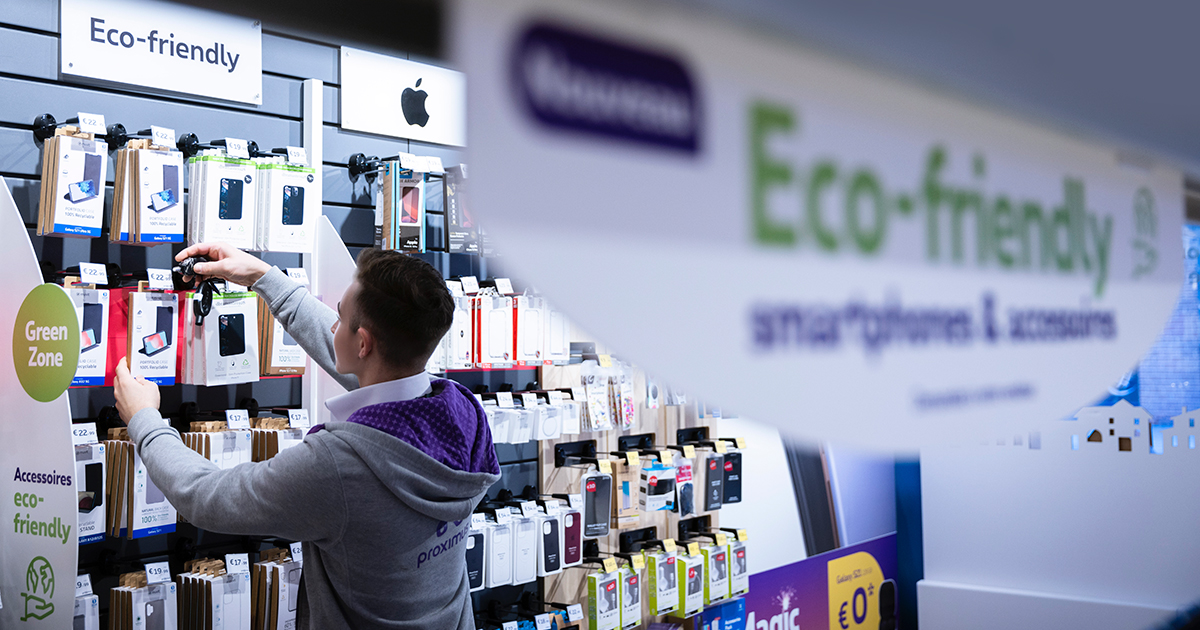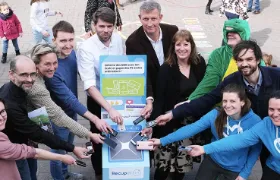We're going net zero, and we need your help
Last year, Proximus became the first BEL20-company and only the third telecom operator worldwide to receive SBTi-validation for our plans to go Net Zero by 2040. It's an achievement we are rightly proud of – but the real work only starts here. And if we want to achieve Net Zero by 2040, we can't do it on our own.
Catherine Bals
Sustainability Department Lead at Proximus
My LinkedIn profile
SBTi stands for Science Based Targets Initiative, a global body that evaluates companies' emission reduction targets for achievability and ambition. Our SBTi validation tells us that we're on the right track: our current plans are robust and realistic. It also creates pressure, both internally and externally, for us to step up our game and work hard to achieve these goals. And it turns out we're going to need your help for that.
Why? Because the majority of our emissions are indirect: any emissions associated with the goods and services we purchase and their transport, as well as the products our consumers buy and use. These indirect emissions make up a whopping 94% of our total emissions. In other words: if we can't get our suppliers and our customers to join our efforts, Net Zero will remain a distant dream. Luckily, we've got a plan.
Becoming an industry advocate for change
To create real and lasting change, we need the entire industry to change. All of our actions are inextricably linked: we have a network of about 4000 suppliers worldwide who all have an influence on our climate impact – in fact, they account for 79% of our indirect emissions. This puts us in a unique position: we depend on our suppliers to reduce our own climate impact, but as Belgium's biggest telecom operator we are also able to put significant weight in the scale and to become real advocates for a greener future. By asking our suppliers to join our climate ambitions, we can create a chain reaction of sustainable change throughout the sector and beyond.
What does that look like in practical terms? In the first place, it simply means talking to our suppliers. We inform them of our commitments and our expectations: we ask all our partners to put in place their own near-term roadmap to reduce emissions and to align their targets with the latest climate science. We tailor our approach depending on the proportion of emissions each company represents, where they stand with their own climate ambitions, and what they need to be able to take action. Based on those initial conversations, we can offer each of our partners the necessary practical support and guidance.
This approach requires an investment from our side, but we are positive that it will pay dividends in the long run. Change takes time. We prefer being realistic and investing in our relationships with our partners over setting strict rules that might exclude some of our current suppliers. We firmly believe that leading by example while keeping the conversation going is the best way to enable lasting change – change that will in turn ripple through the sector and continue to spread.
Nudging customers towards greener choices

While the products and services we buy make by far the biggest impact on our emissions, we can't forget the products we sell or lease either. There are two fronts where we can make an impact here: in the product design, and in the way we encourage customers to use them.
Circular design should be the new standard in any industry, not least the telecom sector. Decreasing energy usage and making appliances repairable and recyclable to the largest extent possible is at the forefront of all our design decisions. For example, our latest internet box has a casing made entirely of recycled plastics, and it uses 24% less electricity and has a 30% lower environmental footprint compared to the previous model. And it's not just about the products our customers physically get their hands on: replacing the existing cable network with fiber is part of the equation too, as it is more efficient and lasts longer than traditional copper cables.
The other side of the coin is how customers use the products they buy from us. Just like in any company, there is a degree of friction between our commercial goals and our desire for greater sustainability. The solution lies in creatively using different business models to nudge customers towards greener choices – for example by encouraging repairs, second-hand purchasing, and recycling of their previous devices when they show interest in a new product.
The bottom line: we can't do it without you
Whether it's nudging customers or encouraging suppliers: it's clear as daylight that Proximus can't fulfil its emission reduction and other sustainability goals without substantial input from everyone we interact with. At the same time, this interdependence only makes us stronger. We can make a much larger impact together than we could on our own.
That's why we are firmly committed to becoming the sector's most outspoken advocate for climate action. We want to lead by example, but we mostly want to be a catalyst for lasting change within our sector and beyond. That's why we call on everyone: please join us in setting ambitious Net Zero goals and creating actionable plans. If we all take the first step today, just imagine what we can achieve together – for our future, and for that of many generations to come.


